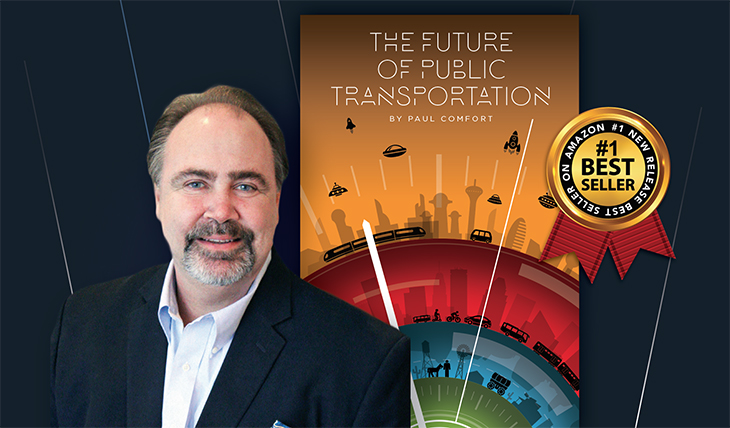Industry Veteran, Paul Comfort’s Acclaimed New Book – The Future of Public Transportation

Transit expert, Paul Comfort has just released a brand-new book; “The Future of Public Transportation”. This acclaimed best-seller is full of insights from over 40 top public transportation experts and executives. After meeting with so many leaders from across the globe, he felt he had a good grasp on what’s going on in the transportation industry, and more importantly, what’s forthcoming, to be able to put this book together. He also discovered a few patterns:
In North America, there were several years of a downward trend in ridership on public transit. Agencies had been focusing on how to increase ridership. Last year, a major story in the Washington Post noted that “Transit ridership fell in 31 of 35 major metropolitan areas in the U.S. in 2017, including each of the seven cities that serve the majority of riders, with losses largely stemming from buses”. Also, data from the American Public Transportation Association showed that from 2014-2016, almost every major transit agency in America suffered a decline in ridership. Factors such a lower fuel costs, telecommuting and new transportation options (Uber, Lyft) contributed significantly to this decline. Lastly, an article in ENO Transportation Center cited that the National Transit Database showed a decline of 5.2% in the number of miles travelled by the country’s public bus agencies between 2009-2014.
However, things took a turn when cities challenged this trend in 2017. They revamped their bus routes and made various improvements, such as adding bus-only lanes – ridership increased. Other transit executives also began to rethink their systems and see what they could do differently, in hopes to attract more riders.
In his book, Paul identifies three key “silver bullets” to increasing ridership and how Mobility-as-a-Service is unfolding: reconfiguring routes, adding frequency where needed and reducing friction that may delay transit vehicles. Moreover, he explains why it’s essential to focus on our strengths while recognizing that our customers’, their travel experience and their demands will be always be dynamic.
As always, our team here at TripSpark is dedicated to helping you move toward the future of transportation!
